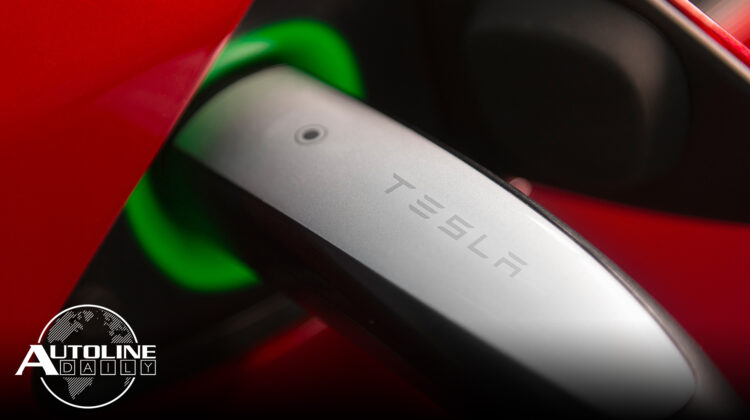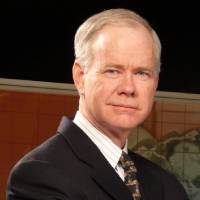
Follow us on social media:
Runtime: 8:16
0:23 OEMs & Environmentalists Clash Over Fuel Economy
1:39 Clever Solution for More Charging Stations
2:49 Tesla Opens 1st V3 Supercharger
3:42 Electronic Parking Brakes Grow in Popularity
4:35 Protecting Passengers in Autonomous Vehicles
5:29 Why Automakers Are Abandoning Auto Shows
Visit our sponsors to thank them for their support of Autoline Daily: Bridgestone and Dow Automotive Systems.
This is Autoline Daily reporting on the global automotive industry.
OEMs & ENVIRONMENTALISTS CLASH OVER FUEL ECONOMY
Yesterday we reported that automakers in the U.S. achieved an all-time record for fuel economy in the 2017 model year. They averaged 24.9 miles per gallon per vehicle. But they were supposed to hit 29.3 MPGs. So most automakers had to use fuel economy credits they had saved up to avoid any fines. For the 2018 model year they’re supposed to hit 30.6 miles per gallon, but are projected to hit 25.4. Honda is the only automaker that met the letter of the law. Mazda and Hyundai came close, but everyone else missed it and automakers that sell full-size pickups and SUVs fell far short. Automakers want relief since the standards were set in 2011 when oil was well over $100 a barrel and before the car market went through a historic shift to crossovers, SUVs and pickups. The regulations get much stricter from 2022 to 2025. But environmental groups such as the Environmental Defense Fund and the Natural Resources Defense Council, say the regulations are working as intended and that automakers should not get any relief.
CLEVER SOLUTION FOR MORE CHARGING STATIONS
Automakers also face a mandate to sell electric cars, but so far sales are falling far short. Not counting Tesla, EV sales in the U.S. fell 13% over the last three months. Traditional automakers only sold 10,700 electric cars, or only 0.3% of sales. One reason people aren’t buying EVs is that there aren’t enough public charging stations. So New York City held a competition to stimulate new ideas on how to quickly come up with a bunch of charging stations at very low cost. A German company called ubitricity won the contest. Its solution is to tap into lamp posts on the street. EV owners still have to carry their own charging cord, but they can plug into outlets on the lamp posts for Level I or Level II charging. Right now, New York has 600 public charging stations, but Jonathan Els, who is in charge of Fleet Sustainability for the City, points out there are 300,000 lamp posts in New York.
TESLA OPENS 1ST V3 SUPERCHARGER
And speaking of charging stations, we have more details on Tesla’s V3 Supercharger. It features a 1 megawatt power cabinet that supports a peak rate of 250 kW per car. In other words, a Model 3 Long Range that’s operating at peak efficiency can add up to 75 miles of range in just 5 minutes. Tesla expects the average charge time at a V3 Supercharger to take 15 minutes, which is about half the amount of time customers spend at current stations. A beta site for the public is now open in the Bay Area, but it’s only available to select Model 3 owners at launch. The first non-beta site will break ground next month and the company will be building more V3 Superchargers in North America, Europe and Asia throughout the year.
ELECTRONIC PARKING BRAKES GROW IN POPULARITY
Here’s a crazy stat I saw the other day. Electronic parking brakes were first introduced in 2002 and according to Chassis Brakes International, one of world’s largest brake suppliers, the technology will be featured on more than 35% of all new cars and light trucks sold in North America this year. Electronic parking brakes have a number of advantages, including space and weight savings, and according to Chassis Brakes the penetration rate will continue to grow. But for those of us who love to do handbrake turns, especially in snowy conditions or on dirt roads, these things stink!
PROTECTING PASSENGERS IN AUTONOMOUS VEHICLES
So often when we see a new autonomous concept car, the passengers are lounging around or laying back to take a rest. But that creates a new issue for automakers and suppliers to solve, how do you keep riders safe in any seating position? Faurecia, one of the world’s largest suppliers, has developed a solution that integrates the seat belt and belt retractor into the seat structure as well as airbags at the edges, which helps create a cocoon around the passenger. And with the seat belt attached to the structure, the seat can swivel outward to allow easier entry and inward to improve conversation or let back seat passengers see the front screen better. Also, the seat is connected to other systems of the vehicle, so if you’re laying back and a crash is detected the seat will automatically move to the safest possible position.
WHY AUTOMAKERS ARE ABANDONING AUTO SHOWS
In the past, automakers used to attend just about every single auto show but now they’re picking and choosing which ones to go to. So why are they doing this? On Autoline This Week, we’re joined by Steve Bruyn from Foresight Research, a company that researches all things about auto shows, and here’s his insight.
(The ATW preview is only available in the video version of today’s show.)
You can watch that entire discussion right now on our website, Autoline.tv or look for it on our YouTube channel.
But that wraps up today’s show, thanks for watching and have a great weekend.
Thanks to our partner for embedding Autoline Daily on its website: WardsAuto.com

John McElroy is an influential thought leader in the automotive industry. He is a journalist, lecturer, commentator and entrepreneur. He created “Autoline Daily,” the first industry webcast of industry news and analysis.





